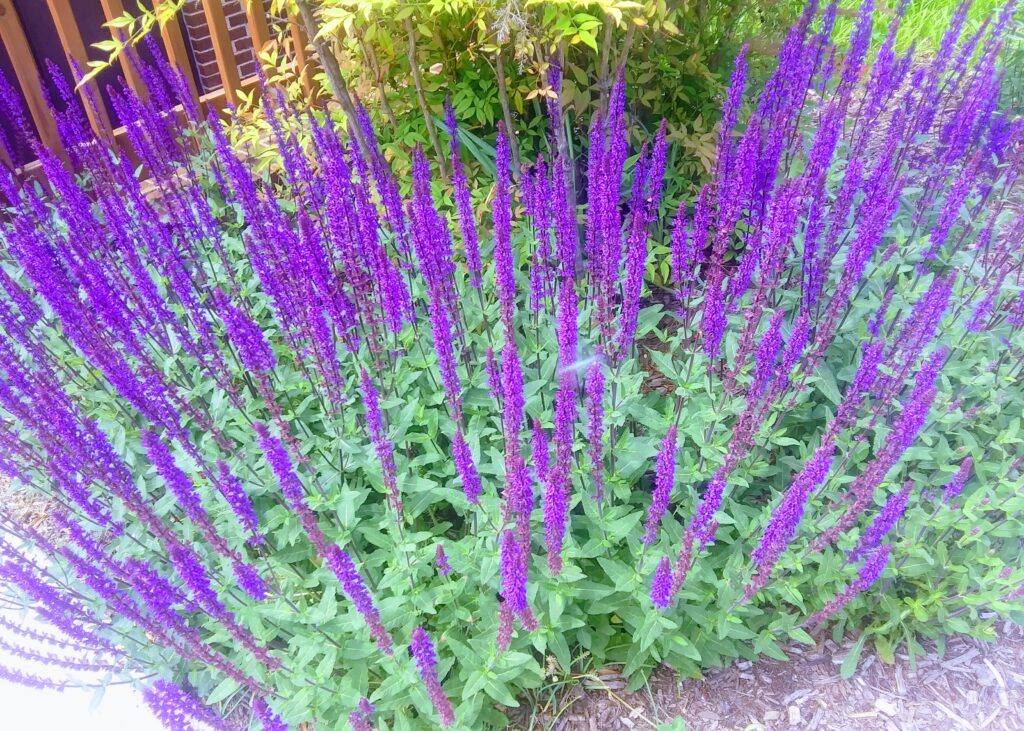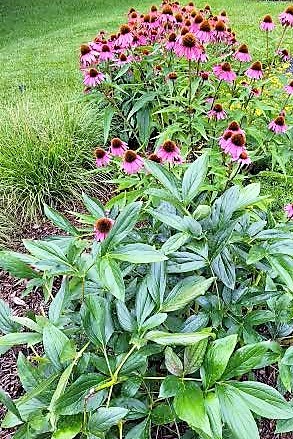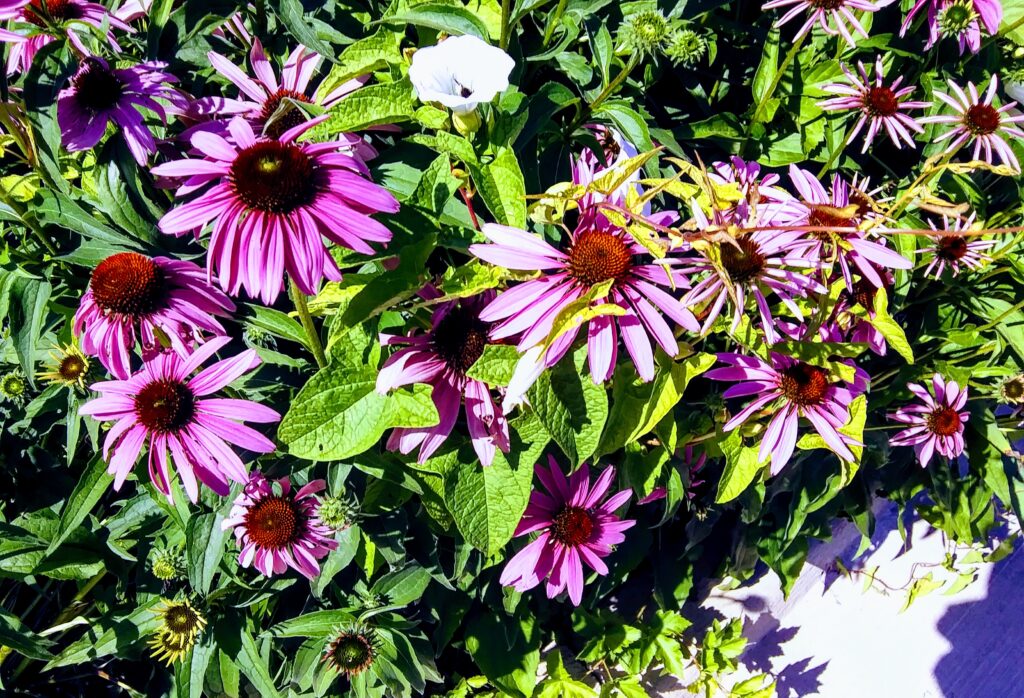A great way to help our birds, bees and butterflies is to plant a Pollinator Garden. A pollinator garden is one which attracts and feeds not only the birds but also the bees, butterflies plus a variety of insects.
A pollinator garden is designed with specific nectar and pollen-producing plants. Even a small garden can make a huge difference due to loss of habitat, chemical use, and the spread of invasive plant species. Some pollinator insects are actually endangered.
To attract birds one immediately thinks of bird feeders or hummingbird feeders. But in truth, birds, insects and butterflies like certain native flowers and seeds grown in the garden.
Pollinators Plants
Yesterday, I attended a online seminar taught by Peg Bier of Merrifield Garden fame. She showed the class photographs taken In her beautiful garden. She planted a variety of flowering plants to attract pollinators. Interestingly, she spoke about the plant Salvia. Depending on the variety, this plant can be both seasonal or a perennial.

Some Salvia plants will bloom all season long if you remember to dead head the flowers. Black and Blue Salvia and Nemorosa Salvia plants are known for a long blooming time. Nemorosa bracts, actually, bloom from June to September.

Another great pollinator plant is the Echinacea which some people call the coneflower.

However, never overlook the common parsley plant which will attract swallowtail butterflies whose caterpillars use the plant as a host. Parsley lasts about two years, then it blooms, and another plant is needed. Some people plant it every year to attract Swallowtails butterflies to their yard.
This parsley plant was grown in a crock on my patio. However, I used it for cooking. I never saw a Swallowtail around it.

Lavender is also a nice plant for the garden. However, it needs lots of sun and good drainage. It also stays green all winter long.
Ending Notes on a Pollinator Garden
Pollinator gardens take time to grow, so be patient with your new plants. They also help the environment by supporting our pollinators.
I have given you a few tips on what a pollinator garden is and how to grow one.
Now, the rest is up to you. Of course, Happy (Pollinator) Gardening!
Resource Sites: Peg Bier’s lecture of Merrifield Garden, www.gardenknowhow, and Wikipedia.

